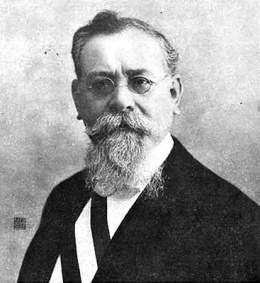 |
| Carranza |
As if fractures between the old guard and up-and-coming revolutionaries weren't enough, Mexico experienced schisms between its revolutionaries. To displace President Victoriano Huerta, Constitutionalists, such as Venustiano Carranza, Alvara Obregón, Pancho Villa, and Emiliano Zapata united. They made strange bedfellows. These Consitutionalists favored closer adherence to the Constitution of 1857 and spirited a rebirth of nationalism, yet their alliance was not to live long.
 |
| Alvara Obregon |
Villa was extremely successful (and ruthless) in winning battles against Huerta in the north. Zapata did well to control Morelos and even surrounding areas.
Carranza, the opportunist and shrewd political, and his famous right-hand general, Obregón, defeated Huerta's federal troops elsewhere.
Carranza hailed from the elite-class and did not share the vision that involved Villa's campesino demands or Zapata's agrarian reforms. This, despite Carranza's own manifesto, "The Agrarian Law of 1915" which ended up being a mere ploy to form the alliance with Villa and Zapata (Wasserman 109). Carranza also began to fear Villa's rise to military power.
"As Villa grew stronger militarily, his relations with Carranza deteriorated" (Gonzales 129).
The Split and Civil War
Villa and Zapata split from the Consitutionalists forming a group of Conventionalists based on their pact to carry-out the liberal policies of workers' rights and land redistribution.
:max_bytes(150000):strip_icc()/pancho-villa-on-presidential-chair-during-revolution-of-1914-in-national-palace-in-mexico-city--zapata-is-at-left--mexico--20th-century-153415896-59ef75efc412440011bfd3af.jpg) |
| Two different personalities, two different revolutionaries |
The Consitutionalists ultimately defeated the Conventionalists because:
- Villa and Zapata never had a strong unified front. During the Convention at Aguascalientes they showed that they were more focused on regional issues, not a national vision.
- Villistas and Zapatistas had different styles. Villistas often looted, raped, and pillaged. Zapatistas, on the other hand, were said to be "uncomfortable" with occupying lands outside of Morelos (Gonzales 146).
- Conventionalists lacked the political background and acumen necessary to influence policy.
- Carranza, ever the politician, grew his Consitutionalist base by working closely with disenfranchised workers and union members in District Federal and invoking anti-US sentiment and strong nationalism (Gonzales 144-147)
- On the battlefield, eventually the tactics of Obregón (trench warfare) outwitted Zapata and his old style calvary charges.
- U.S. President Woodrow Wilson finally acknowledged and then supported Carranza (even allowing military supplies to be shipped through the U.S. to Carranza's troops) which was the tipping point for Villa (Gonzales 153).
The Constitution of 1917: A Fantastic Document, In Theory
Carranza assumed the Presidency after the civil war. He drafted a new constitution. The liberal-leaning jacobinos inserted more social rights, property and land rights, and anti-clerical measures (Gonzales 163). Surprisingly, in short order, the Constitution of 1917 emerged from somewhat divided politics.
Factionalism divided the coalition during and after the constitutional negotiations. Some of the constitutional laws were disregarded. Obviously, Carranza had Zapata assasinated--which went against Article 22 which declared that "capital punishment for political offenses is prohibited." Obregón, later, had Villa assasinated. Neither actually stood trial for any offense. They were just considered threats and therefore were terminated without much of a thought toward the consitutionality of it.
Article 27 declared that all land and subsoil rights were "vested originally in the Nation." This upset foreign oil and mining companies, so that was delicately ignored by Carranza to assuage foreigners. Article 32 also spelled-out how Mexicans should receive "priority over foreigners" but workers still faced unfair pay and treatment in many cases.
Land distribution really did not happen though the Constitution waxed poetic on how land would be distributed or protected. It nullified the land grabs of the Porfiriato, yet even years later under Obregón (who did establish ejidos in select rural areas), the government still abided hacendados. Most land was owned by a small number of wealthy elites. Rural people, farmers, and other workers still clammored for more protections and rights.
While a lot changed since the Porfiriato, which must have seemed like a lifetime ago, some old habits were hard to break. In 7-10 years, Mexico had undergone a revolution, a coup, assasinations of presidents, and a civil war, and created a document that spoke to the many issues the original revolutionaries were seeking. The problem then became how much Mexico was willing to live up to its new ideologies and laws.
No comments:
Post a Comment